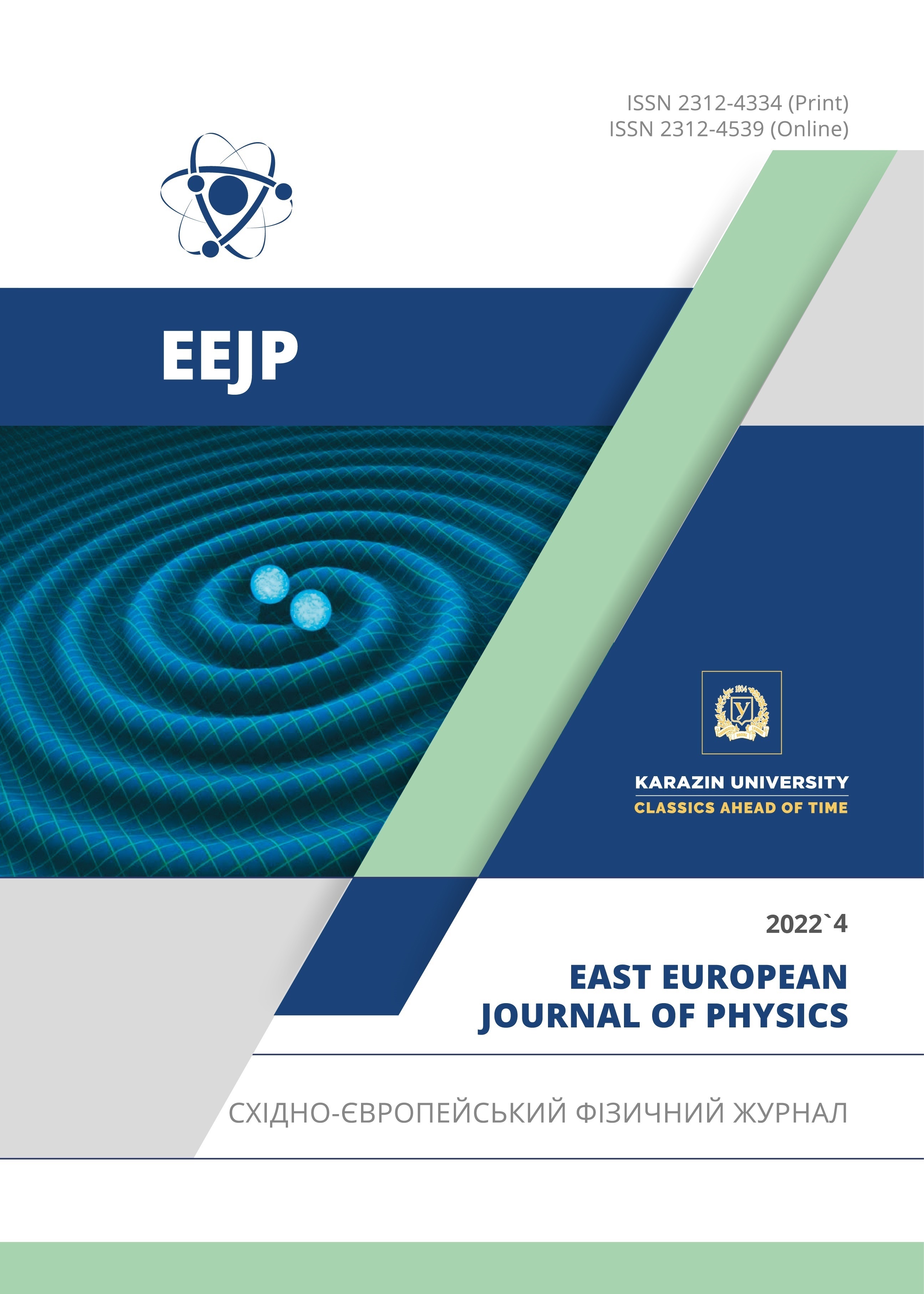Detection of Lysozyme Amyloid Fibrils Using Trimethine Cyanine Dyes: Spectroscopic and Molecular Docking Studies
Abstract
Due to their unique photophysical and photochemical properties and high sensitivity to the beta-pleated motifs, cyanine dyes have found numerical applications as molecular probes for the identification and characterization of amyloid fibrils in vitro and the visualization of amyloid inclusions in vivo. In the present study the spectroscopic and molecular docking techniques have been employed to evaluate the amyloid sensitivity and the mode of interaction between the trimethine cyanine dyes and native (LzN) and fibrillar (LzF) lysozyme. It was found that the trimethine association with non-fibrilar and fibrillar lysozyme is accompanied by the changes in dye aggregation extent. The molecular docking studies between trimethine dyes and lysozyme in the native and amyloid states indicate that: i) trimethines tend to form the most stable complexes with deep cleft of the native lysozyme; ii) the dye binding with non-fibrillar protein is governed by the hydrophobic interactions, π-stacking contacts between aromatic or cyclopentane ring of the cyanine and Trp in position 63 or 108 and hydrogen bonds between the OH-groups of the trimethines and acceptor atoms of Asp 101 (AK3-7) and Gln 57 (AK3-8) of LzN; iii) cyanine dyes form the energetically most favorable complexes with the groove Gly 2-Leu 4/Ser 8-Trp 10 of the lysozyme fibril core; iv) cyanines-LzF interaction is stabilised by hydrobhobic contacts, π-stacking interaction and hydrogen bonds. The dyes AK3-7, AK3-5 and AK3-11 were selected as the most prospective amyloid probes.
Downloads
References
P. Pronkin, A. Tatikolov, Molecules, 27(19), 6367 (2022). https://doi.org/10.3390/molecules27196367.
M. Bokan, G. Gellerman, L. Patsenker. Dyes Pigm., 171, 107703 (2019). https://doi.org/10.1016/j.dyepig.2019.107703.
M. Guo, P. Diao, Y.-J. Ren, F. Meng, H. Tian and S.-M. Cai, Sol. Energy Mater. Sol. Cells, 88, 33–35 (2005). https://doi.org/10.1016/j.solmat.2004.10.003.
C. Shi, J.B. Wu, D. Pan. J. Biomed. Opt. 21(5), 05901 (2022). https://doi.org/10.1117/1.JBO.21.5.050901.
G. D. Pelle, A. D. Lopez, M. S. Fiol, Int. J. Mol. Sci., 22(13), 6914, (2021). https://doi.org/10.3390/ijms22136914.
O. Cavuslar, and H. Unal, RSC Advances. 5, 22380-22389 (2015). https://doi.org/10.1039/C5RA00236B
H. L. Yang, S.Q. Fang, Y.W. Tang, et al., Eur. J. Med. Chem. 179, 736-73 (2019). http://dx.doi.org/10.1016/j.ejmech.2019.07.005.
X. Mu, F. Wu, R. Wang, Z. Huang, et al., Sens Actuators B. Chemical., 338, 29842, (2021). https://doi.org/10.1016/j.snb.2021.129842.
K.D. Volkova, V.B. Kovalska, O.A. Balanda, R.J. Vermeij, V. Subramaniam, Y.L. Slominskii, S.M. Yarmoluk, J. Biochem. Biophys. Methods, 70, 727–733, (2007). https://doi.org/10.1016/j.jbbm.2007.03.008.
V.B. Kovalska, M.Yu. Losytskyy, O.I. Tolmachev, et al., J. Fluoresc. 22, 1441–1448, (2012). https://doi.org/10.1007/s10895-012-1081-x.
J. Yan, J. Zhu, K. Zhou, et al., Chem. Commun. 53, 1441–1448, (2017). https://doi.org/10.1039/C7CC05056A.
T. Smidlehner, H. Bonnet, S. Chierici, I. Piantanida, Bioorg. Chem.,104, 104196, (2020). https://doi.org/10.1016/j.bioorg.2020.104196.
R. Sabate, J. Estelrich, Biopolymers, 72(6), 455-463, (2003).https://doi.org/10.1002/bip.10485.
G.Q. Gao, A.W. Xu, RSC Adv., 3, 21092-21098, (2013). https://doi.org/10.1039/C3RA43259A.
O. Zhytniakivska, A. Kurutos, U. Tarabara, K. Vus, V. Trusova, G. Gorbenko, N. Gadjev. And T. Deligeorgiev, J. Mol. Liq. 311, 113287 (2020), https://doi.org/10.1016/j.molliq.2020.113287
S. Chernii, Y. Gerasymchuk, M. Losytskyy, D. Szymanski, et al., PLOS One, 16(1), e0243904. (2021). https://doi.org/10.1371/journal.pone.0243904.
K. Vus, U. Tarabara, A. Kurutos, O Ryzhova, G. Gorbenko, et al., Mol Biosyst, 13(5), 1970-1980, (2017). https://doi.org/10.1039/c7mb00185a
H.L. Yang, S.Q. Fang, Y.W. Tang, et al. Eur. J. Med. Chem, 179, 736-743, (2019). https://doi.org/10.1016/j.ejmech.2019.07.005.
K. Vus, M. Girych, V. Trusova, et al. J Mol Liq, 276, 541-552 (2019). https://doi.org/10.1016/j.molliq.2018.11.149.
M. Bacalum, B. Zorila, M. Radu, Anal. Biochem., 440, 123-129, (2013). https:// doi.org/10.1016/j.ab.2013.05.031.
S. Dallakyan, and A.J. Olson, Methods Mol. Biol. 1263, 243-250 (2015), https://doi.org/10.1007/978-1-4939-2269-7_19.
S. Salentin, S. Schreiber, V.Joachim Haupt, M.F. Adasme, and M. Schroeder, Nucleic Acids Res. 43, W443-W447 (2015), https://doi.org/10.1093/nar/gkv315.
P. Csizmadia, In: Proceedings of ECSOC-3, the third international electronic conference on synthetic organic chemistry, 367-369 (1999), https://doi.org/10.3390/ECSOC-3-01775
M.D. Hanwell, D.E. Curtis, D.C. Lonie, T. Vandermeersch, E. Zurek, and G.R. Hutchison, J. Cheminform. 4, 17 (2012), https://doi.org/10.1186/1758-2946-4-17.
V. Trusova, East Eur. J. Phys. 2, 51-58 (2015), https://doi.org/10.26565/2312-4334-2015-2-06.
P.L. Donabedian, M. Evanoff, F.A. Monge, D.G. Whitten, and E.Y. Chi, ACS Omega, 2, 3192-3200 (2017), https://doi.org/10.1021/acsomega.7b00231
Copyright (c) 2022 Olga Zhytniakivska, Uliana Tarabara, Atanas Kurutos, Kateryna Vus, Valeriya Trusova, Galyna Gorbenko

This work is licensed under a Creative Commons Attribution 4.0 International License.
Authors who publish with this journal agree to the following terms:
- Authors retain copyright and grant the journal right of first publication with the work simultaneously licensed under a Creative Commons Attribution License that allows others to share the work with an acknowledgment of the work's authorship and initial publication in this journal.
- Authors are able to enter into separate, additional contractual arrangements for the non-exclusive distribution of the journal's published version of the work (e.g., post it to an institutional repository or publish it in a book), with an acknowledgment of its initial publication in this journal.
- Authors are permitted and encouraged to post their work online (e.g., in institutional repositories or on their website) prior to and during the submission process, as it can lead to productive exchanges, as well as earlier and greater citation of published work (See The Effect of Open Access).








